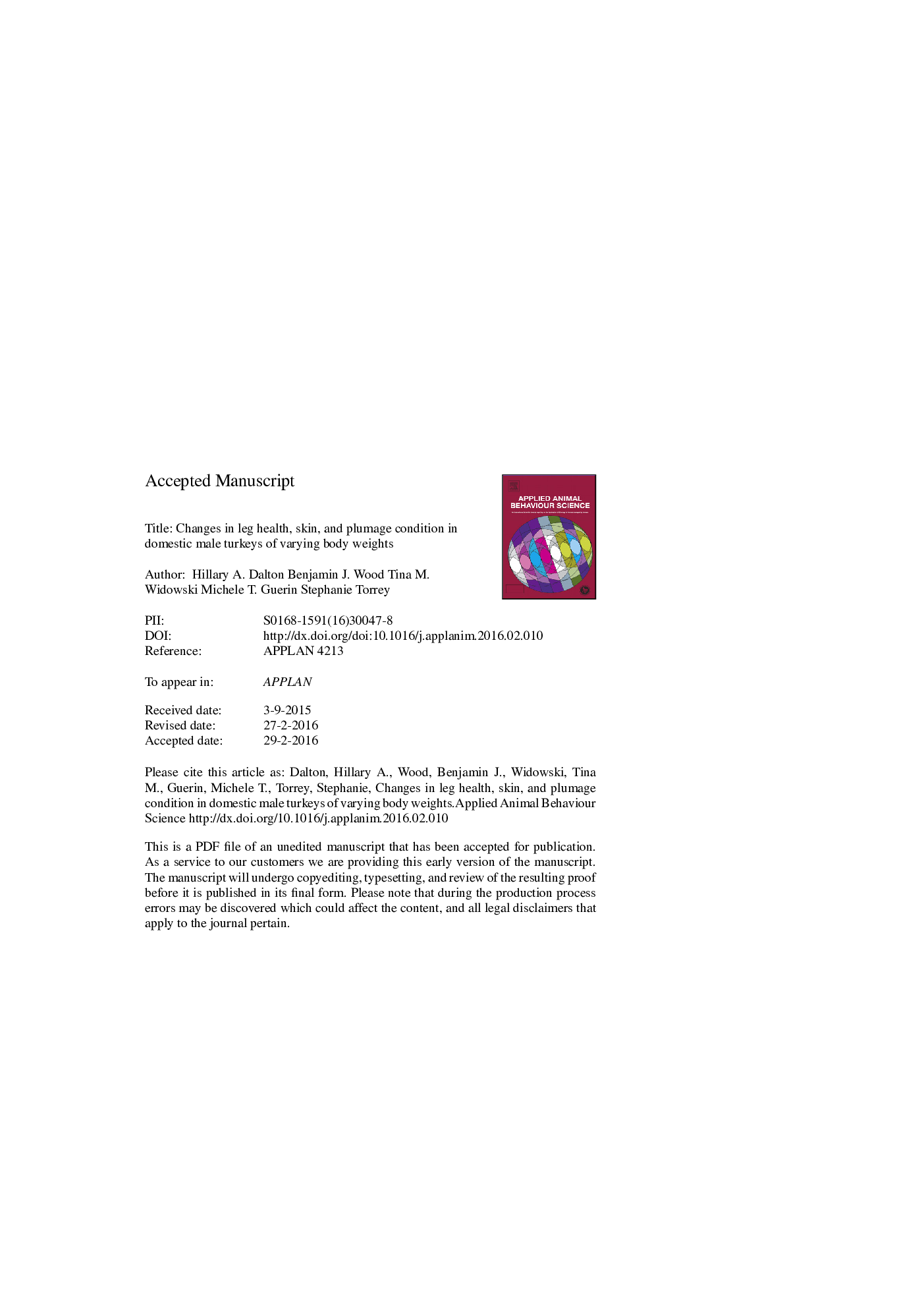| کد مقاله | کد نشریه | سال انتشار | مقاله انگلیسی | نسخه تمام متن |
|---|---|---|---|---|
| 6379400 | 1625328 | 2016 | 39 صفحه PDF | دانلود رایگان |
عنوان انگلیسی مقاله ISI
Changes in leg health, skin, and plumage condition in domestic male turkeys of varying body weights
ترجمه فارسی عنوان
تغییرات در سلامت پوست، پوست و شرایط آلوچه در بوقلمون های داخلی زن با وزن های مختلف بدن
دانلود مقاله + سفارش ترجمه
دانلود مقاله ISI انگلیسی
رایگان برای ایرانیان
موضوعات مرتبط
علوم زیستی و بیوفناوری
علوم کشاورزی و بیولوژیک
علوم دامی و جانورشناسی
چکیده انگلیسی
Injurious pecking in turkeys is a serious welfare and economic concern in commercial production. Yet, very little is known about the development of this behaviour, and whether it relates to physical characteristics of the turkey. The objective of this study was to investigate the relationships among group variation in body weight, snood length, leg health, and skin and plumage damage over time in adult male turkeys. At 11 weeks of age, 50 male turkeys were allocated to one of three treatments based on body weight: HEAVY (8.22 ± 0.11 kg), AVERAGE (7.54 ± 0.11 kg), or LIGHT (7.14 ± 0.11 kg; mean ± standard error of the mean (SEM)). Turkeys were housed in groups of 8-10 with two replicates per treatment. They were weighed and scored weekly for plumage and skin condition (separate scores for head, neck, back, wings, and tail) and leg health (gait, footpad health and cleanliness, and number and severity of deviated toes). The data were divided into three time periods: 11-13, 14-17, and 18-21 weeks of age, and analyzed with a mixed model procedure and principal components analysis in SAS. With time, gaits worsened (Live Gait: F2,65 = 14.72, P < 0.0001, Video Gait: F2,43 = 2.00, P = 0.15) and turkeys had more deviated toes (F2,71 = 177.10, P < 0.0001) and a greater severity of toe deviations (F2,112 = 75.15, P < 0.0001) across all weight treatments. All turkeys showed worse footpad cleanliness over time (F2,162 = 12.01, P < 0.0001), which might have contributed to the increase in footpad health problems (F2,69 = 15.58, P < 0.0001). Pecking injuries to the head (F1,66 = 17.71, P < 0.0001) and neck (F1,46 = 4.40, P = 0.042) became more prevalent after the first period, whereas pecking injuries to the back (t48 = â4.37, P < 0.0001) increased in the final period. Damage to the tails of these turkeys also increased significantly in the final period (t51 = â6.80, P < 0.0001). Snood length did not vary between treatments and showed no association to the head and neck condition of these turkeys. As turkeys aged, signs of injurious pecking increased while leg health deteriorated. However, group variation in early body weights was not predictive of leg health, snood length, or being the recipient of skin and plumage damage later in life.
ناشر
Database: Elsevier - ScienceDirect (ساینس دایرکت)
Journal: Applied Animal Behaviour Science - Volume 178, May 2016, Pages 40-50
Journal: Applied Animal Behaviour Science - Volume 178, May 2016, Pages 40-50
نویسندگان
Hillary A. Dalton, Benjamin J. Wood, Tina M. Widowski, Michele T. Guerin, Stephanie Torrey,
